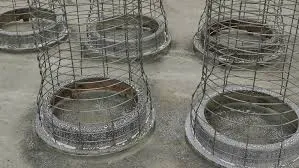- Afrikaans
- Albanian
- Amharic
- Arabic
- Armenian
- Azerbaijani
- Basque
- Belarusian
- Bengali
- Bosnian
- Bulgarian
- Catalan
- Cebuano
- China
- China (Taiwan)
- Corsican
- Croatian
- Czech
- Danish
- Dutch
- English
- Esperanto
- Estonian
- Finnish
- French
- Frisian
- Galician
- Georgian
- German
- Greek
- Gujarati
- Haitian Creole
- hausa
- hawaiian
- Hebrew
- Hindi
- Miao
- Hungarian
- Icelandic
- igbo
- Indonesian
- irish
- Italian
- Japanese
- Javanese
- Kannada
- kazakh
- Khmer
- Rwandese
- Korean
- Kurdish
- Kyrgyz
- Lao
- Latin
- Latvian
- Lithuanian
- Luxembourgish
- Macedonian
- Malgashi
- Malay
- Malayalam
- Maltese
- Maori
- Marathi
- Mongolian
- Myanmar
- Nepali
- Norwegian
- Norwegian
- Occitan
- Pashto
- Persian
- Polish
- Portuguese
- Punjabi
- Romanian
- Russian
- Samoan
- Scottish Gaelic
- Serbian
- Sesotho
- Shona
- Sindhi
- Sinhala
- Slovak
- Slovenian
- Somali
- Spanish
- Sundanese
- Swahili
- Swedish
- Tagalog
- Tajik
- Tamil
- Tatar
- Telugu
- Thai
- Turkish
- Turkmen
- Ukrainian
- Urdu
- Uighur
- Uzbek
- Vietnamese
- Welsh
- Bantu
- Yiddish
- Yoruba
- Zulu
Oct . 18, 2024 06:43 Back to list
condensing heat exchanger
Understanding Condensing Heat Exchangers
Condensing heat exchangers play a crucial role in various industrial applications, including power generation, refrigeration, and air conditioning. At their core, these devices facilitate efficient heat transfer between two fluids, allowing one to release heat while the other absorbs it, thereby optimizing energy use in systems.
A condensing heat exchanger is specifically designed to condense vapor into liquid, typically recovering waste heat from exhaust gases or steam. This process is essential in improving the overall efficiency of thermal systems, as it captures energy that would otherwise be lost. The design and operation of these exchangers are vital in many sectors, particularly in enhancing the performance of boilers and other heating systems.
The Working Principle
The fundamental principle behind a condensing heat exchanger is the phase change of the working fluid. When vapor, such as steam, enters the heat exchanger, it comes into contact with a cooler surface, transferring heat to that surface. As the heat is extracted, the steam condenses into liquid water. This phase change releases latent heat, which can be harnessed for further use in heating processes or other applications.
Typically, a condensing heat exchanger consists of tubes or plates where the vapor enters on one side, while a cooling fluid moves on the other side. This configuration maximizes the surface area for heat transfer, ensuring effective condensation. The materials used in the construction of these exchangers are vital, as they must withstand the corrosive nature of the fluids and the high temperatures typically involved.
Applications
condensing heat exchanger

Condensing heat exchangers find applications in a variety of fields. In power plants, they are used to recover heat from exhaust gases to improve the efficiency of turbines. In HVAC systems, these exchangers help in recovering heat for reheating air or water, making the systems more energy-efficient. Furthermore, in the food and beverage industry, they are used in processes requiring temperature control and heat recovery.
Another emerging area for condensing heat exchangers is in renewable energy. For example, in geothermal applications, these systems can enhance the efficiency of heat extraction from the earth. Similarly, in combined heat and power (CHP) systems, they play a significant role in maximizing energy recovery.
Advantages
The use of condensing heat exchangers comes with several advantages. Primarily, they significantly improve energy efficiency, leading to reduced fuel consumption and lower operational costs. This eco-friendly aspect aligns with global efforts toward sustainability and reducing carbon footprints. Additionally, they can prolong the life of equipment by minimizing overheating and providing stable operating conditions.
Maintenance is another crucial aspect of condensing heat exchangers. Regular cleaning and inspection are necessary to prevent fouling and scaling, which can impair performance. However, their robust design and the materials used can often lead to lower maintenance needs compared to other types of heat exchangers.
Conclusion
In summary, condensing heat exchangers are indispensable components in modern thermal systems. Their ability to recover waste heat and enhance energy efficiency makes them vital in various industries, from power generation to HVAC and beyond. As technology advances and the focus on sustainability increases, the role of these exchangers is likely to expand, providing innovative solutions for energy management. Understanding their function and benefits will be paramount for future developments in energy efficiency and environmental stewardship.
-
8mm Thin-Walled Cast Steel Manhole Cover Pallet Bottom Ring | Durable
NewsAug.04,2025
-
Premium Cast Iron Water Main Pipe: Durable, Corrosion-Resistant
NewsAug.03,2025
-
Durable Cast Iron Water Mains | AI-Optimized Systems
NewsAug.02,2025
-
High-Efficiency Propane Boiler for Baseboard Heat | Save Energy
NewsAug.01,2025
-
Premium Source Suppliers for Various Gray Iron Castings
NewsJul.31,2025
-
Durable Cast Iron Water Main Pipes | Long-Lasting
NewsJul.31,2025


